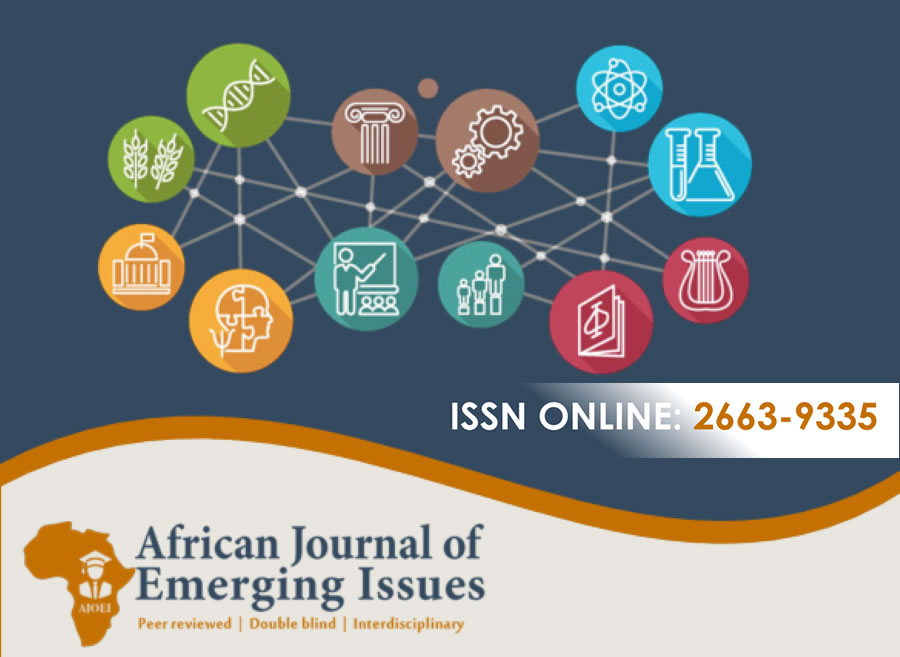ANALYZING ACCESS TO HOUSING FINANCE AND ITS IMPLICATIONS FOR LOW-INCOME EARNERS IN SIAYA, BONDO, AND UGUNJA TOWNS, SIAYA COUNTY, KENYA
Abstract
Statement of the Problem: Limited access to housing finance remains a significant barrier for low-income earners in Kenya's secondary urban centers. Despite government initiatives like the Affordable Housing Program, structural challenges including high interest rates, stringent eligibility criteria, and complex application processes continue to exclude informal sector workers from formal housing finance systems.
Purpose of the Study: This study examined housing finance accessibility for low-income earners in Siaya, Bondo, and Ugunja towns, Siaya County, Kenya, focusing on mortgage availability, affordability barriers, and regulatory constraints limiting inclusive finance access.
Methodology: A mixed-methods design was employed with 383 household respondents selected through stratified random sampling and 12 key informant interviews from financial institutions. Data analysis used SPSS 26.0 for quantitative data and thematic analysis for qualitative responses.
Research Findings: Formal housing finance remains largely inaccessible, with 59.32% of respondents finding finance options unaffordable and 62.66% citing unreasonable interest rates. Only 28% found housing finance easily accessible, while 57.33% reported complex loan processes. Government programs showed limited impact (17.33% effectiveness), forcing households to rely on informal borrowing and rental arrangements.
Conclusion: Low-income families face significant housing finance barriers due to high costs, opaque policies, limited financial literacy, and restrictive eligibility criteria, resulting in widespread financial exclusion despite growing housing demand.
Recommendation: Financial institutions should develop flexible, low-interest products for informal workers. Government should expand targeted housing programs and address structural barriers.
Keywords: Access, Housing Finance, Low-Income, Earners, Ugunja Towns
References
Ayonga, J. N. (2021). Land tenure, speculative capitalism, and the urban poor nexus in the vicious cycle of slum formation in Kenya. African Journal of Emerging Issues, 3(8), 27–43. https://www.ajoeijournals.org
Byrne, D., & Diamond, D. B. (2007). Affordable housing finance: Innovations and constraints. Urban Institute Press. https://ir.lawnet.fordham.edu/ulj/vol34/iss2/1/
Centre for Affordable Housing Finance in Africa (CAHF). (2023). Housing finance in Africa yearbook 2023. Retrieved from https://housingfinanceafrica.org
Chirchir, S. (2006). The role of housing finance in Kenya’s housing development. Nairobi: Ministry of Housing. https://www.rba.go.ke/download/promoting-home-ownership-salome-chirchir-pdf/
Kieti, A. (2015). Challenges of accessing housing finance by informal sector workers in Kenya. Journal of African Housing Studies, 7(2), 112–125. https://www.jstor.org/stable/44983703
Kieti, A., & Wanyoike, D. M. (2017). Factors affecting accessibility of housing finance by public servants in Kenya: A case study of Nakuru County. International Journal of Economics, Commerce and Management, 5(7), 154–170. https://erepository.uonbi.ac.ke/handle/11295/90808
Kimani, M., & Karugu, W. (2020). Barriers to mortgage access in Kenya. African Journal of Economic Policy, 17(1), 80–95.
Kimani, M., & Muriithi, J. (2019). SACCOs and mortgage financing: Opportunities and limitations. Journal of Cooperative Finance, 5(1), 43–60.
Kosgei, K. N., & Tenai, J. (2018). Effectiveness of government housing programmes in Kenya. Journal of Public Administration and Policy Research, 10(3), 32–39. https://ijecm.co.uk/wp-content/uploads/2018/08/6844.pdf
Mbote, P. K. (2005). Gender issues in land tenure under customary law. In H. W. O. Okoth-Ogendo & M. S. Wanjala (Eds.), Essays on Land Law: The Reform Debate in Kenya (pp. 243–257). Nairobi: University of Nairobi Press. https://erepository.uonbi.ac.ke/bitstream/handle/11295/41243/Fulltext?sequence=1
Meen, G. (2018). Housing affordability and policy: The UK experience. Palgrave Macmillan. https://thinkhouse.org.uk/site/assets/files/1566/policy.pdf
Mundra, K., & Oyelere, R. (2013). Access to housing finance and demographic influences: Evidence from Kenya. Applied Economics Letters, 20(9), 817–820. https://www.auhf.co.za/wp-content/uploads/2023/09/REPORT-SYSTEMIC-BARRIERS-TO-ACCESS-AND-USE-OF-HOUSING-FINANCE-IN-KENYA-DEMYSTIFIED.pdf
Muthama, E. W. (2019). Influence of financial literacy on access to housing credit by low-income earners in Nairobi City County, Kenya. International Journal of Finance and Accounting, 4(1), 45–59. https://erepository.uonbi.ac.ke/handle/11295/63383
Ndii, D. (2020). Kenya’s housing finance paradox: Affordability vs credit access. Nairobi: Institute for Economic Affairs. https://repository.kippra.or.ke/bitstreams/4276276b-d248-44c3-a4f7-c0831ffa30e1/download
Nubi, T. (2019). Urban informal finance: Implications for low-income housing development. Housing Policy Debate, 29(5), 750–768. http://www.diva-portal.org/smash/get/diva2:1872618/FULLTEXT01.pdf
Sheng, Y. K., & Mehta, M. (2008). Housing as a human right: Global perspectives and local realities. Habitat International, 32(3), 306–317.
Sheppard, S. (1997). Housing and the economy. Regional Science and Urban Economics, 27(3), 347–371. http://herzog.economia.unam.mx/profesores/blopez/valoracion-sheppard.pdf
Stone, M. E. (2003). Housing affordability: One-third of a nation shelter-poor. Housing Policy Debate, 14(1–2), 1–45. https://www.shenandoahcountyva.gov/DocumentCenter/View/322/Housing-Affordability---Michael-Stone-PDF
Tunde, A. M. (2019). Housing finance systems and urban low-income households in Africa: A review of approaches. Urban Studies Research, 2019, Article ID 5842451. https://fsdafrica.org/publication/cahf-2019-housing-finance-in-africa-yearbook-10th-edition/
UN-Habitat. (2020). Financing sustainable urban development in Africa: Strategies and best practices. Nairobi: United Nations Human Settlements Programme. https://unhabitat.org/online-reports/financing-sustainable-urban-development
Wide, C. J. (2024). Informal finance in urban housing markets: Lessons from East Africa. Journal of Housing and the Built Environment, 39(2), 321–338. http://www.diva-portal.org/smash/get/diva2:1872618/FULLTEXT01.pdf
World Bank. (2021). Kenya Economic Update: Navigating the Pandemic. Washington, DC: World Bank Group https://documents1.worldbank.org/curated/en/957121606226133134/pdf/Kenya-Economic-Update-Navigating-the-Pandemic.pdf





